This is done to enhance the performance and reliability of data storage. Each RAID level in the RAID configuration is optimized for a different situation. Thus, every layer offers a distinct balance of performance concerning data capacity and data reliability. Moreover, the RAID technology is used on servers and high-speed computers to mitigate risks of disk failures.
What is RAID 5?
RAID levels vary by the number of disks and therefore they are referred by specific alphanumeric names. These names have alphanumeric characters between 0 to 10 and the number against them indicates the particular array level. The higher is the number of RAID array better is the protection it ensures against unrecoverable sector read errors and physical drive failures.
Thus, considering the fact RAID 5 is relatively a robust storage solution. A RAID 5 array typically includes a minimum of three disk drives and block interleaved data striping with distributed parity across all drives. As the number of disk drives in RAID 5 array increases its efficiency also goes up.
The various benefits that a RAID 5 array provides include increased performance, high fault tolerance, and cost-effectiveness for databases reliant on read operations.
Causes How a RAID 5 Failure Can Occur
In RAID 5 array parity information is distributed across all disk drives. This is done to ensure that in case if one drive fails, others remain functioning. In such instances RAID controller removes the damaged drive from the array so that there is no impact on the data in other drives that are functioning well. And hence with this, all business operations can continue as normal without the risk of data loss.
But still, there is no 100 percent guarantee for the data’s safe upkeep. This is because disasters can happen anytime. Especially, the faulty array rebuilds can make your RAID susceptive to data loss. This is one of the common reasons that result in RAID5 array failure. The reason being RAID rebuild is a lengthy process that involves reading data from all disk drives simultaneously. Thus, during this rebuild process, there are chances of other drives getting damaged and hence failing a complete array. All-in-all, it can be inferred that RAID 5 can handle damage to one drive, but not more.
Another major cause for RAID 5 failure is putting back array with one failed drive online. Although RAID 5 can withstand a single drive failure most of the RAID5 controllers come with “force online” function. If by any means you happen to put back the wrong drive online then it is likely to corrupt the entire array.
As a consequence the following reasons can be attributed for RAID 5 array failure:
The simultaneous failure of two or more drives at once.
Forcing RAID 5 array back online with a failed drive.
Besides this other scenarios that could lead to RAID 5 failure include:
Inadvertent reconfiguration of the RAID volume.
Missing RAID partition.
RAID Controller malfunction.
Faulty RAID volume configuration.
Controller failure or corruption due to abrupt power surge.
Virus / Malware infection.
While each RAID drive is just a hard drive the causes for its failure are similar to that of other hard drives.
Since RAID setups are widely used by small scale businesses and other organizations their failure can be very devastating. A RAID 5 crash can put your business’s data at stake and affect its continuity. Thus, if your organization relies on RAID 5 technology, make sure you acquaint yourself with handy ways that could help you fix issues while ensuring safety to your data.
Recovering Data from Failed RAID 5 Array
Fortunately, all data stored on RAID 5 is recoverable. But to make it certain you need to pay attention to a few essential things. Given below are some ways that can help you address the issue:
The first and foremost thing you need to do is to shut down the system. Stop the work whatever you were doing then and there. The reason being two of your RAID disks have already failed but your RAID controller might be still in the active state. It could continue writing operations on other drives and make them fail too. Therefore, it is better to shut down the system before the problem elevates further.
Assemble all the required hardware and software to carry out the RAID recovery process in a single attempt without any intrusion. For this you’ll need:
An additional PC and external storage with the same storage space as that of your affected RAID disks. However, for external storage, it is advisable to use a NAS.
A UPS to power your PC, additional PC that you are going to use, NAS, and router. There should interruption from the power source that could stop the recovery process.
An external hard drive docking station, another spare PC that you’ll use for recovery of your RAID disks through a bootable operating system.
A reliable RAID 5 data recovery software from a reputed data recovery organization.
Detach all drives from RAID array and check each one’s physical integrity according to particular drive vendor configuration utility. NOTE: You just need to find out the failed drive and not attempt to repair it.
Once checked, take note of the name/number and other specifications of failed disks.
Now, you can either do it by yourself or consult a professional for the RAID data recovery.
Final Words
Failure of complete RAID 5 array can be tragic for your business. Therefore, it is advisable to regularly back up your RAID 5 array. Moreover, you must consult a trustworthy professional data recovery service provider like Techchef.
For safe data recovery in minimal downtime, you can always count upon Techchef experts. For RAID array recovery Techchef professionals use specialized tools and proprietary software that have been proven to exhibit effective results over the years.




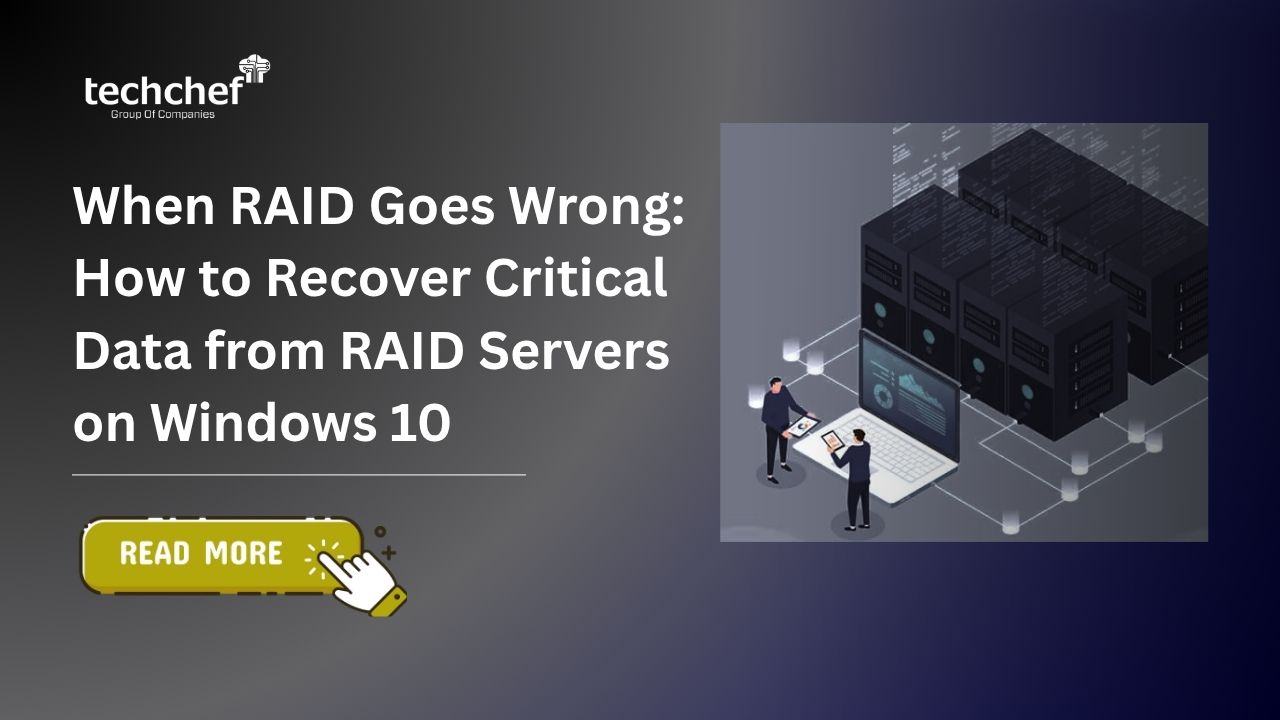
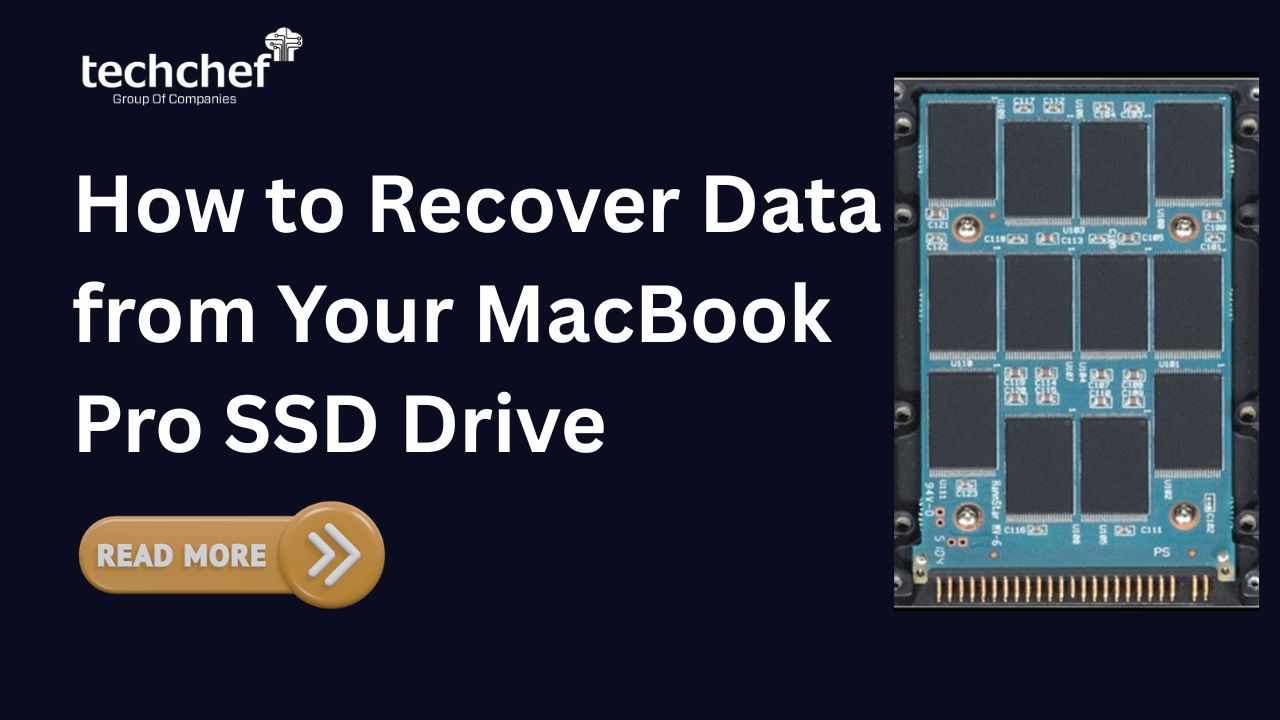
 How to Recover Data from Your MacBook Pro SSD Drive
How to Recover Data from Your MacBook Pro SSD Drive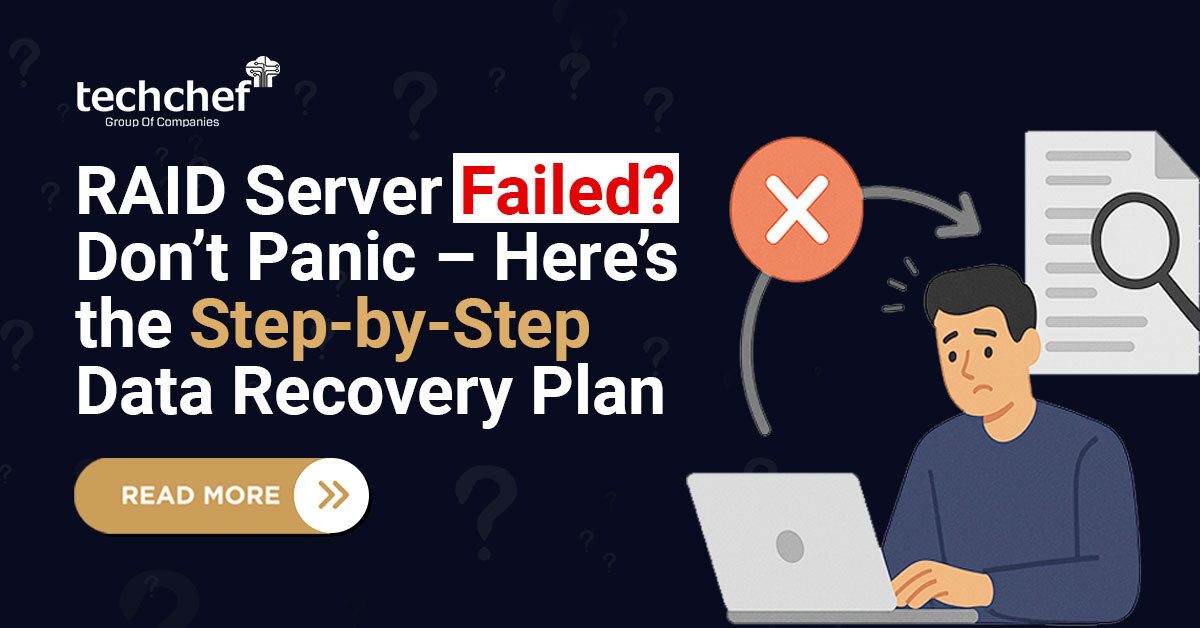
 RAID Server Failed? Don’t Panic – Here’s the Step-by-Step Data Recovery Plan
RAID Server Failed? Don’t Panic – Here’s the Step-by-Step Data Recovery Plan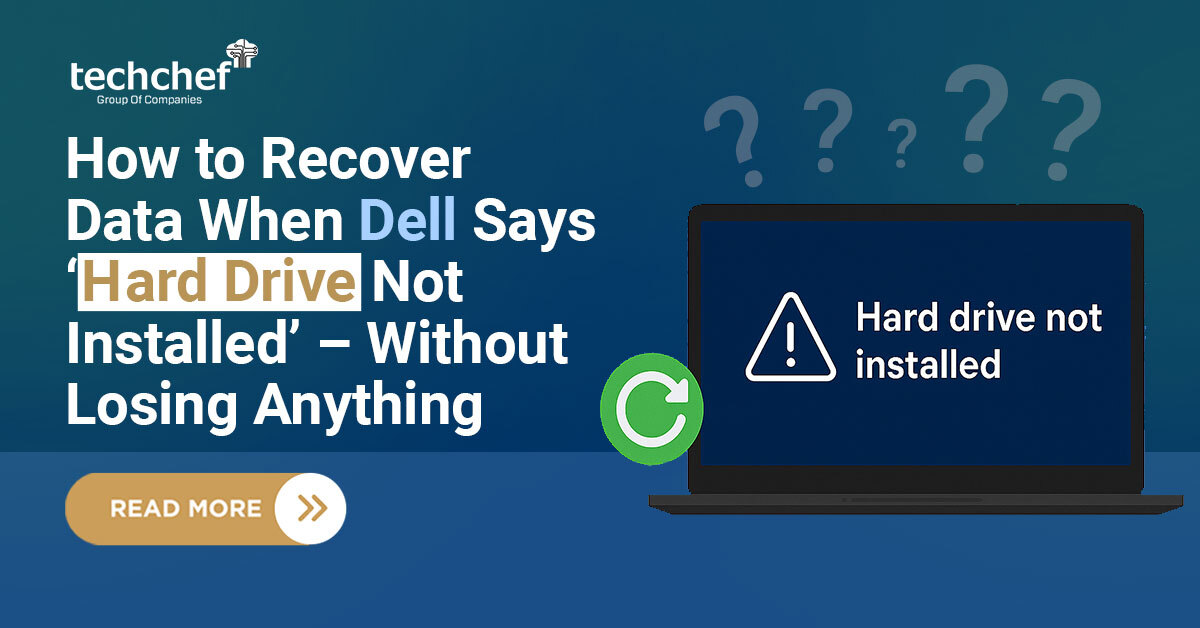
 How to Recover Data When Dell Says ‘Hard Drive Not Installed’ – Without Losing Anything
How to Recover Data When Dell Says ‘Hard Drive Not Installed’ – Without Losing Anything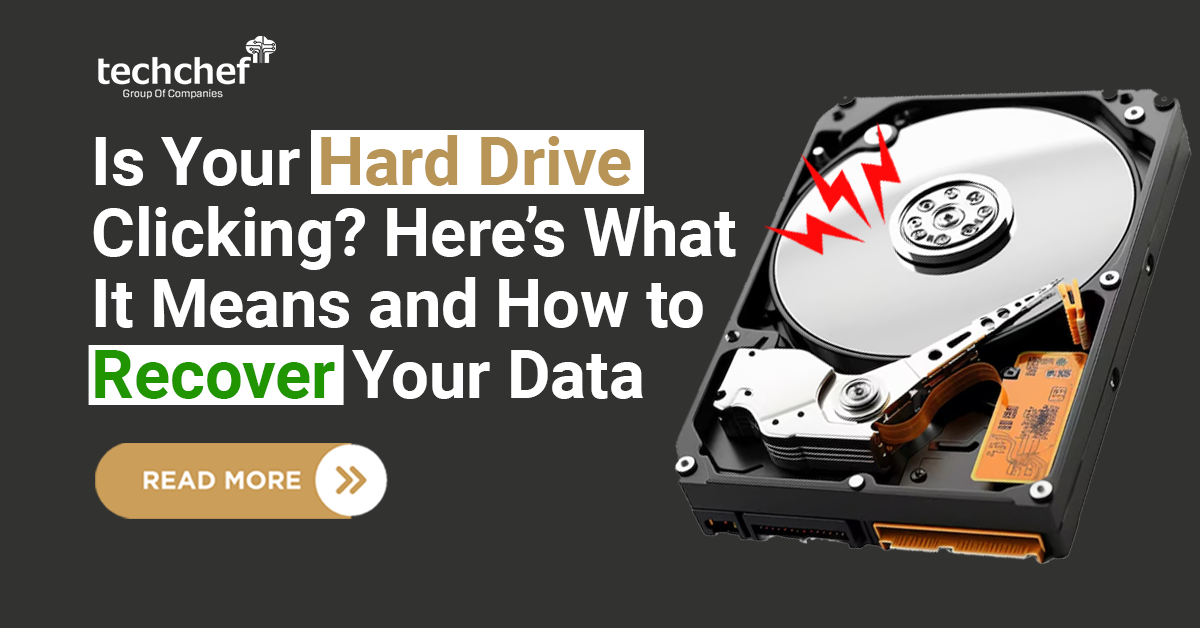
 Is Your Hard Drive Clicking? Here’s What It Means and How to Recover Your Data
Is Your Hard Drive Clicking? Here’s What It Means and How to Recover Your Data

